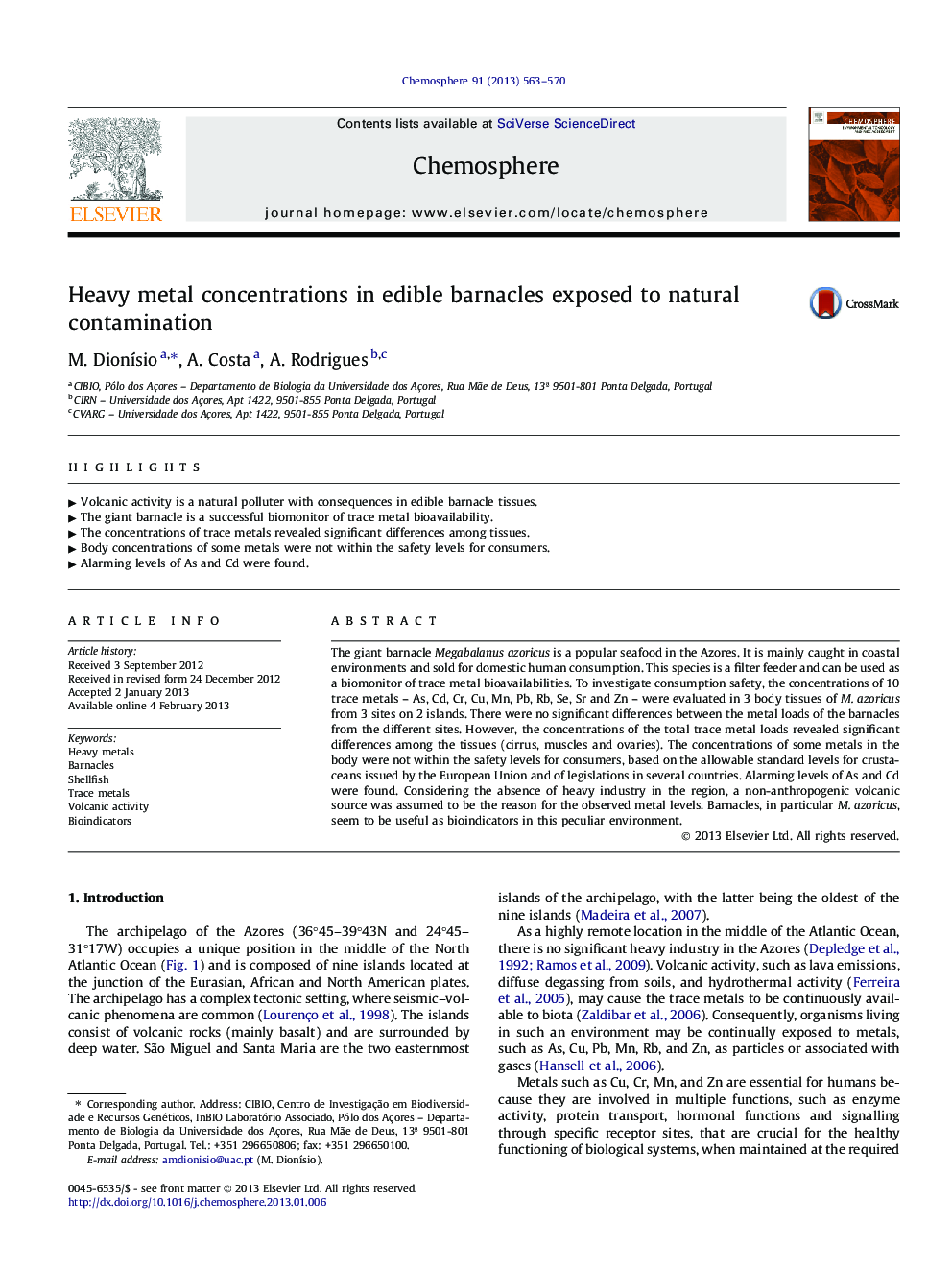| Article ID | Journal | Published Year | Pages | File Type |
|---|---|---|---|---|
| 4409448 | Chemosphere | 2013 | 8 Pages |
The giant barnacle Megabalanus azoricus is a popular seafood in the Azores. It is mainly caught in coastal environments and sold for domestic human consumption. This species is a filter feeder and can be used as a biomonitor of trace metal bioavailabilities. To investigate consumption safety, the concentrations of 10 trace metals – As, Cd, Cr, Cu, Mn, Pb, Rb, Se, Sr and Zn – were evaluated in 3 body tissues of M. azoricus from 3 sites on 2 islands. There were no significant differences between the metal loads of the barnacles from the different sites. However, the concentrations of the total trace metal loads revealed significant differences among the tissues (cirrus, muscles and ovaries). The concentrations of some metals in the body were not within the safety levels for consumers, based on the allowable standard levels for crustaceans issued by the European Union and of legislations in several countries. Alarming levels of As and Cd were found. Considering the absence of heavy industry in the region, a non-anthropogenic volcanic source was assumed to be the reason for the observed metal levels. Barnacles, in particular M. azoricus, seem to be useful as bioindicators in this peculiar environment.
► Volcanic activity is a natural polluter with consequences in edible barnacle tissues. ► The giant barnacle is a successful biomonitor of trace metal bioavailability. ► The concentrations of trace metals revealed significant differences among tissues. ► Body concentrations of some metals were not within the safety levels for consumers. ► Alarming levels of As and Cd were found.
